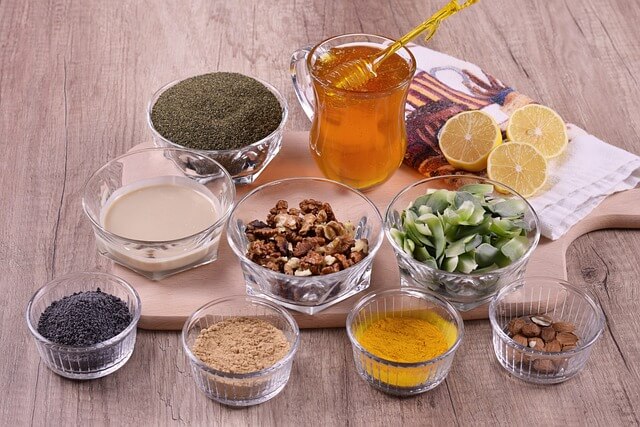Introduction
Have you ever wondered what magic elements elevate an ordinary dish to the level of a culinary masterpiece? And what is flavour enhancer? There are a number of food components, such as sweeteners, sodium chloride (NaCl), and monosodium glutamate (MSG), which have been referred to as “taste enhancers,” their primary function is to add more molecules to the food, which results in more intense flavours or smells.
The increase in demand for natural substitutes is an important shift in the food flavour enhancer market. More and more consumers are looking for flavour enhancers made from natural ingredients like spices, herbs, and botanical extracts. Given that customers are becoming more aware of the quality and source of the flavours that enhance their culinary experiences, this trend is consistent with the larger shift towards clean labels and natural ingredients.
Surprisingly many food products, even some we might not expect, contain flavor enhancers. So having a knowledge of what substances or additives are added to our food always benefits us in living a healthy life. This post looks into the exciting topic of “What is a Flavour Enhancer & How Do Flavour Enhancers Work?”
What is flavour enhancer?
A substance added to food to improve or enhance its natural flavour is known as a flavour enhancer. The same term has also been applied to the phrase “flavour potentiator.”

What are flavour enhancers made of?
Traditional flavour enhancers are made of and fall into three primary categories:
- Organic acids and their sodium salts
- Nucleotides and their sodium salts
- Amino acids and their sodium salts
What is used as a flavour enhancer?
Monosodium glutamate has been used extensively in the food industry. It is a sodium salt of the common amino acid glutamic acid. In addition, the following substances are used to improve flavour sodium aspartate, disodium inosinate (IMP), disodium guanylate (GMP), disodium cytidylate (CMP), disodium adenylate (AMP), disodium uridylate (UMP), and disodium succinate.
Natural flavour enhancers which are used in food preparation are spices, salt, essential oils, herbs and artificial flavour enhancers are monosodium glutamate, sweeteners, Disodium guanylate.
Do you ever have a question about what is the difference between flavour and flavour enhancer? Here is your answer flavors are concentrated solutions used to add a specific aroma to food or beverages. Flavour enhancers add extra richness to food and drinks by intensifying their flavours.
How do flavour enhancer work?
Certain food molecules stimulate the chemical senses of taste and smell, which gives food its flavor. Specialized cells found in the taste buds process and interpret tastes. The tongue, mouth, and throat are the locations where the five basic taste sensations—sweet, salty, bitter, sour, and umami—are sensed. Specific flavor compounds (such sweeteners) are recognized by distinct taste cells.
Apart from the basic tastes, certain olfactory (smell) cells in the nasal cavity are stimulated by the flavoring compounds in food. These cells are capable of identifying over 10,000 distinct stimuli, which allows them to precisely regulate how a food tastes.
What are natural and artificial flavour enhancers?
Essential oils or compounds derived from various sources, such as fruits, vegetables, bark, buds, leaves, meat, seafood, poultry, dairy products, etc., are known as natural flavour enhancers.
Artificial flavours are essentially chemical mixtures that mimic natural flavours in both taste and aroma. Both artificial and natural flavours play a major role in flavouring food rather than providing nourishment.

What are examples of flavour enhancers in food?
These are the examples of flavour enhancers used in food preparations:
- Monosodium glutamate
- Salt
- Honey
- Citric acid
- Corn syrup
- Sweeteners
Flavour enhancers 627, 631
Flavour Enhancer 627 (Disodium Guanylate) is added to improve the flavour of any food product. It is used in small quantities; it improves the flavour of any food product. It is colourless by nature. It is obtained from monosodium glutamate as a crystalline powder or tiny crystals.
Disodium Guanylate is produced from the fermentation of tapioca starch. Other sources used to extract this flavour enhancer include sardines and yeast. It gives a savoury flavour to a variety of foods. There are two types of 627 flavour enhancer; one is extracted from fish and the other is a yeast extract that is suitable for vegetarians.
Flavour enhancer 631
It is a sodium salt of inosinic acid. It is found as a naturally occurring acid in animals. It is obtained in the form of crystalline powder. It has a white colour or can be colourless. Commercially it is produced using fish or meat and bacterial fermentation of sugar may also result in its production.
You can check a complete flavour enhancers list given by me in my other article on food flavours.

Flavour enhancer side effects
While flavour enhancers can make food taste better, taking them frequently or in high quantities can be harmful to our health.
Flavour enhancers may cause negative side effects in some people, like headaches, nausea, or allergy symptoms. These reactions are sometimes called “Chinese Restaurant Syndrome” and are frequently linked to monosodium glutamate intake. It is noteworthy that these responses are comparatively rare and mainly impact allergic persons.
But we should be worried more about excessive consumption of flavour-enhanced food which can result in overeating. These chemicals’ strong flavours have the potential to suppress our body’s natural satiety signals, leading us to eat more calories than we actually need. This may lead to weight increase and the emergence of health problems associated with obesity.
The digestive system may be impacted by flavour enhancers. After consuming foods containing these ingredients, some people may experience gastrointestinal discomfort, such as bloating or diarrhoea. Those who already have stomach issues may find these symptoms very irritating.
Excessive consumption of some flavour enhancers, including MSG, has been linked to elevated blood pressure, a major risk factor for heart disease. When ingesting foods that contain these chemicals, people with hypertension or a family history of heart disease should take caution.
It is important to remember that not everyone who consumes flavour enhancers has a rise in blood pressure, and the effects can differ based on a variety of factors, including heredity and diet.
Conclusion
Flavour enhancers have the ability to improve the taste of our favourite foods, but they may also pose health hazards. Fast food and processed snacks are not the only foods that use flavour enhancers. They can also be present in foods that seem healthful, like salad dressings, soups, and some goods that are vegetarian or vegan.
When feasible, choose whole, unprocessed foods and read labels to reduce our exposure to these substances. It’s critical to prioritize a balanced, whole-food diet, be conscious of the additives in our meals, and use these additives sparingly. We may enjoy tasty meals while protecting our health by making wise decisions.